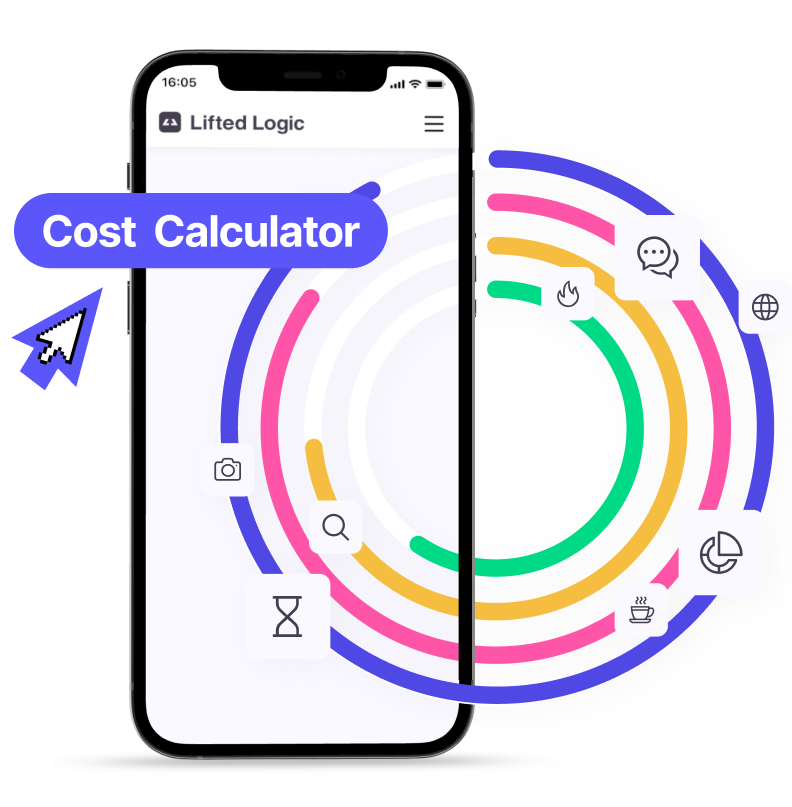If you hear me talk about an MVP, there’s only a 32% chance I’m talking about Patrick Mahomes. For website and web application development, I’m talking about your minimum viable product. How do you calculate the minimum viable product for your website project? The first step is understanding the purpose of your product down to its simplest possible point.
What is a minimum viable product?
When it comes to how you calculate the minimum viable product for your website project, first you should probably know exactly what it is. A minimum viable product is a device, website, or application performing the bare minimum of its purpose. For an easy way to imagine an MVP, think of a car as nothing but a box with an engine, a steering wheel, and four tires that gets you from point A to point B. No windshield, because the purpose of the car is not to protect you from the wind. No radio, because the purpose of the car is not to entertain you while you drive it. The bare minimum purpose of a car is to get you somewhere more quickly than walking.
Calculating the minimum viable product for your website project is especially helpful for those building:
- Web Apps
- Native Apps
- E-Commerce Websites
- Subscription Services
Basically, if the product you are building IS your business, you need to understand the concept of an MVP.
What’s the purpose of an MVP?
Your MVP should provide sufficient customer value by delivering minimal features for early adopters of your product. You then collect feedback enabling you to build a better product to resonate with future users.
Start everything with your MVP
People come to us with new ideas a lot. When I meet with them, I try to help them get to their MVP, so they can get an actual build on real deliverables instead of just loosely connected ideas and thoughts.
Without guidance, many people end up “scope creeping” themselves. In project management, scope creep means changes and/or continuous, uncontrolled growth in a project’s scope after the beginning of the project. Not only does this cost you more money, it extends the project timeline.
It happens when people don’t take the time to properly define, document, and control their project and it usually leads to results that don’t align with your MVP.
Keep your project on track
You could end up building screens that weren’t planned for and don’t tie into the flow of your project. It’s similar to walking into a house with a bedroom next to the front door. We all know, it doesn’t make sense for the flow of the house to put a bedroom in a high-traffic area like that. So why does it happen sometimes? Because the builder or home owner hasn’t thought about their MVP.
In contrast, some houses are planned so well you’re able to make additions to them years into the future without compromising the flow or convenience of your layout. The same is true about a good MVP. If we use enough foresight to plan it, we can create a minimum viable product that’s fully capable of building out as demand calls for more functionality.
How do people get away from their minimum viable product?
As I briefly touched on already, your minimum viable product does exactly what you want your product to do. Nothing more and nothing less.
Here’s an example that’s a little closer to home.
You want to teach children how to play guitar through a subscription-based program. You have 12 lessons on how to play guitar and you want your product to put those lessons in front of people. Okay, now how to calculate the minimum viable product for your website project?
While you’re discussing this with your developers, you think how it would be cool if the app had a built-in tuner to let students know if their chords are out of tune. And then you think, well maybe it would be useful to have a function that allows students to submit recordings to be run against a metronome that analyzes their timing and provides feedback.
There are a lot of things you could do with this program, and if you’ve got an unlimited amount of time and money you can do pretty much anything. But at this point, you’ve already gotten away from your minimum viable product: a subscription service for your 12 guitar lessons.
I’m not saying it’s unproductive to dream big about all the cool things you’ll do someday with your product, I’m just saying you always need to remember the core of why you started your project (and sometimes, by extension, the company).
Tools to create a minimum viable product
One of the best ways to create an MVP is to ask and answer 30 billion questions. When we’re the ones working on your product, we’re really going to make you think about the things you want, and then we’re going to challenge them. At Lifted Logic, our goal is to find out exactly what you need. That level of understanding lets us build a minimum viable product that can easily be built upon.
When budget is a concern (when isn’t it?), it’s important to differentiate between wants and needs in order to limit the amount of risk you take. When we minimize risks and define needs, the project overall is in a much better spot.
Map out your project
Don’t neglect the value of a visual guide to your MVP. Draw out what you envision. It doesn’t have to be a literal drawing, it can be a branching list or bracket—whatever works for you. We do the same thing when we are building websites!

Let’s go back to the guitar lesson subscription product as an example.
Screen A is your login screen. So what does that need? You need fields for the user to input information. You need to have the ability for the user to recover a password.
Screen B would be a dashboard once the user logs in. So what does that need? Access to the lessons is key, of course. From there, you map it out. When you get a head start on that type of work, meetings with your developer go more smoothly.
The importance of mapping out your project like this is a big reason we do free discovery meetings with clients. We want to spec every nut, bolt, action, use, and function of your product, and we will still be questioning what aspects are necessities. That’s all part of the process of developing your MVP.
Evolving your MVP
The modern automobile is a prime example of something that started as a minimum viable product and has evolved into a product the original inventors might not even recognize.
Would things have turned out the same if Henry Ford had been sidetracked because he wanted a radio in the car? Sure, it’s hard to imagine a modern car without a radio (or heater), so it may feel like part of the MVP. But it’s not. If installing a radio in the car had been more important than making it steer, it would have totally changed the product.
It can be easy for people to lose sight of their original focus because of inspiration hitting them as they go. That’s a great entrepreneurial mindset, but it’s important to rein in those features until the MVP is established and functional.
Outside help isn’t always helpful to your MVP
Back to our guitar lessons app. We’ve already gone over how important it is to keep focused on the actual goal of teaching kids to play guitar via subscription lessons. Once you start bringing people into your app and getting into development, you may find yourself inundated with people who want to “help.”
Someone from a guitar string company may come and suggest the app should be able to listen to a string and tell people whether it needs replacing. Think back to your MVP: does that help teach kids how to play guitar? No, it sells strings, because that guy’s priority is selling strings, not getting subscriptions for your guitar lessons.
Outside investors in your project will always be quick to tell you their money is contingent on the app providing certain functions that help their bottom line, whether it’s good for your MVP or not. Far too often we find ourselves listening to people who aren’t even investing. It’s easy to think “Oh, if I had this I could get more money because someone is interested in it.” But when you’re coming up with a new product, you’ve got to focus on the basic functionality before anything else.
If we’re making our guitar app and we give 20% to the functionality of listening to strings, we’re taking 20% away from the core product. Sometimes you do have to compromise, of course. But, largely, that’s not the case.
Learn from my mistakes
Years ago, when I was working on sending videos to phones, I met with an investor who said he would invest if we found a way to send home tours to phones. I spent at least a month working on that functionality and (spoiler alert) he didn’t end up investing. I lost sight of my core competency (sending videos to phones), and I very well could have ended up defeating myself before I even started. Plus, I lost a month of development time on my core product.
I’ve come a long way and learned a whole lot since those days, which is why I’m always happy to help our clients work through their ideas in order to drill down on those true needs for their minimum viable product.
MVPs: Reviewing the basics
MVP, Budget, Timeline. Those are the most important things when you’re first planning your project.
Outside factors can potentially hijack your project. Those factors include investors, opinions, and getting away from those basics.
Use your own sweat equity in the ways you can. A lot of people who are coming to us are not technically literate, but they have ideas hinging on tech. Don’t discount yourself just because you’re not an expert. You know your business!
If you aren’t asking and answering billions of questions, something ain’t right. We ask a bunch of difficult questions, and we consistently challenge ideas. I don’t want to take money from a client and go down the wrong path. We eat the time up front on every project to make sure what we build for you will be sustainable, workable, affordable, and serve your core purpose.
Calculate the minimum viable product for your website project with Lifted Logic
If having a functional, customized website with great SEO is something that can help your business (hint: it almost definitely can), Lifted Logic can help. We’re a lean, mean, website-building machine doing the best custom web design and development in Kansas City.
We’ve worked with companies both big and small to develop unique, fully customized websites that tell a story. To get started, just reach out or use our free cost calculator tool today.





